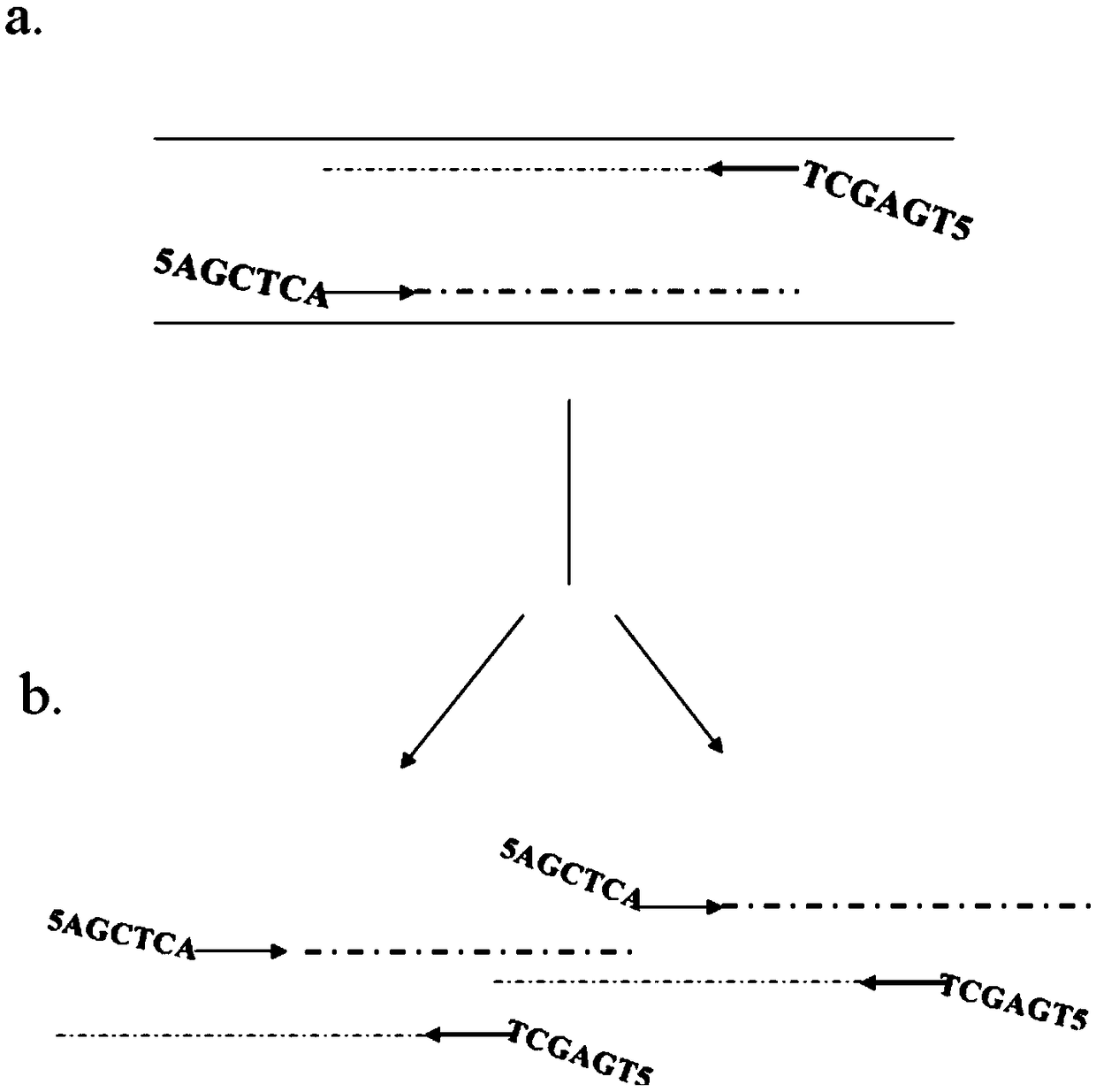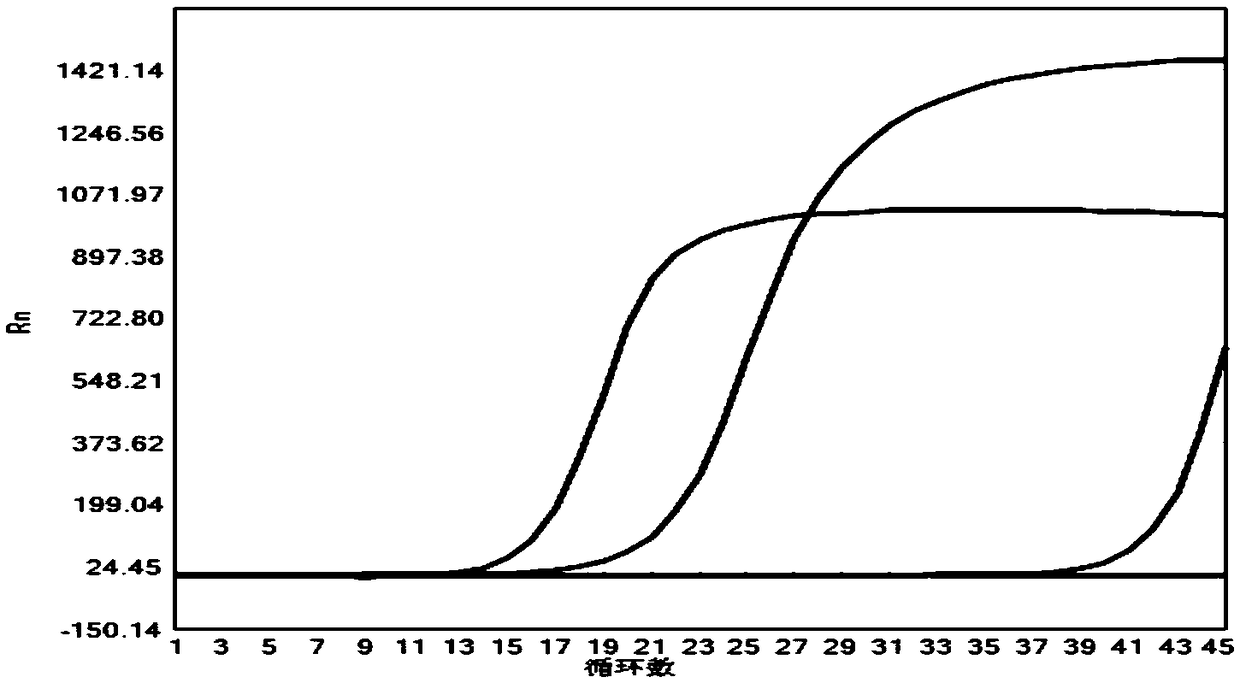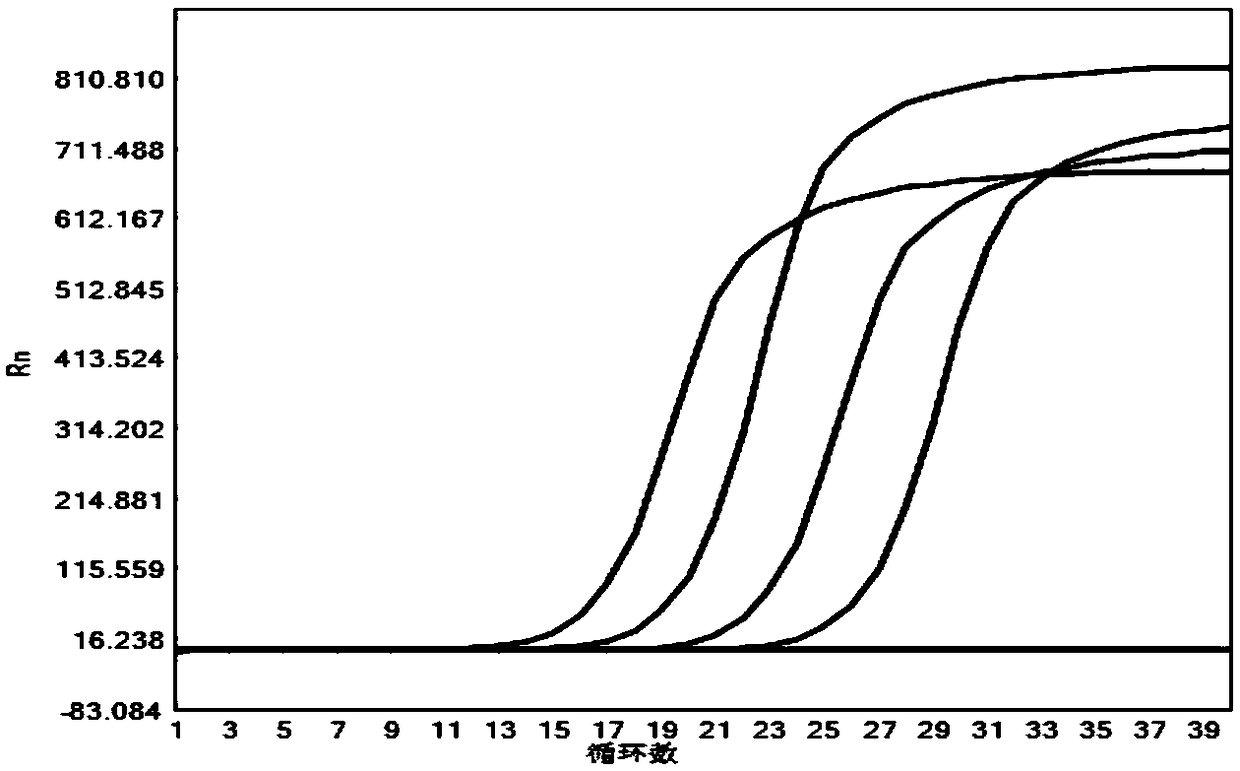Reverse complementary fluorescent PCR at 5' ends of primers
A reverse complementary and fluorescent technology, applied in the field of fluorescent PCR, can solve problems such as limitations and insufficient sensitivity of single-molecule detection, and achieve the effect of enhancing sensitivity
- Summary
- Abstract
- Description
- Claims
- Application Information
AI Technical Summary
Problems solved by technology
Method used
Image
Examples
Embodiment Construction
[0107] 1. Hepatitis B virus (HBV) sensitized real-time fluorescent PCR:
[0108] Hepatitis B virus (hepatitis B for short) is a worldwide Class III infectious disease infected by hepatitis B virus (Hepatitis B virus, HBV). According to the World Health Organization (WHO), about 2 billion people in the world carry hepatitis B virus. The infection rate of hepatitis B among Chinese people is very high (nearly 10%). Liver cancer, which is mainly caused by hepatitis virus, has ranked first in tumors, which has greatly endangered people's health. At present, the detection methods of hepatitis B mainly include 5 items / 7 items of enzyme immunoassay, chemiluminescence method, immunofluorescence method, nucleic acid amplification (PCR) fluorescence quantitative method, etc. Traditional enzyme immunoassays are widely used, but their sensitivity is insufficient; real-time fluorescent PCR quantitative and digital quantitative PCR methods can accurately measure the viral load of hepatitis B...
PUM
 Login to View More
Login to View More Abstract
Description
Claims
Application Information
 Login to View More
Login to View More - R&D
- Intellectual Property
- Life Sciences
- Materials
- Tech Scout
- Unparalleled Data Quality
- Higher Quality Content
- 60% Fewer Hallucinations
Browse by: Latest US Patents, China's latest patents, Technical Efficacy Thesaurus, Application Domain, Technology Topic, Popular Technical Reports.
© 2025 PatSnap. All rights reserved.Legal|Privacy policy|Modern Slavery Act Transparency Statement|Sitemap|About US| Contact US: help@patsnap.com



